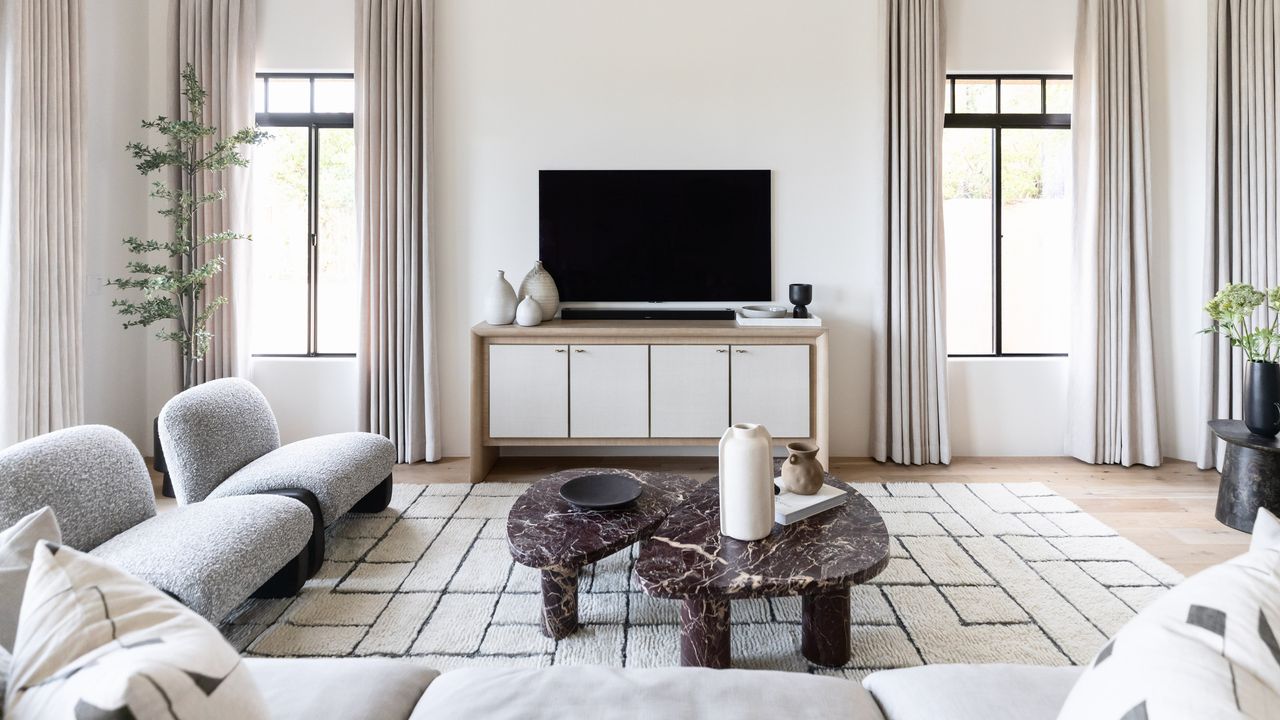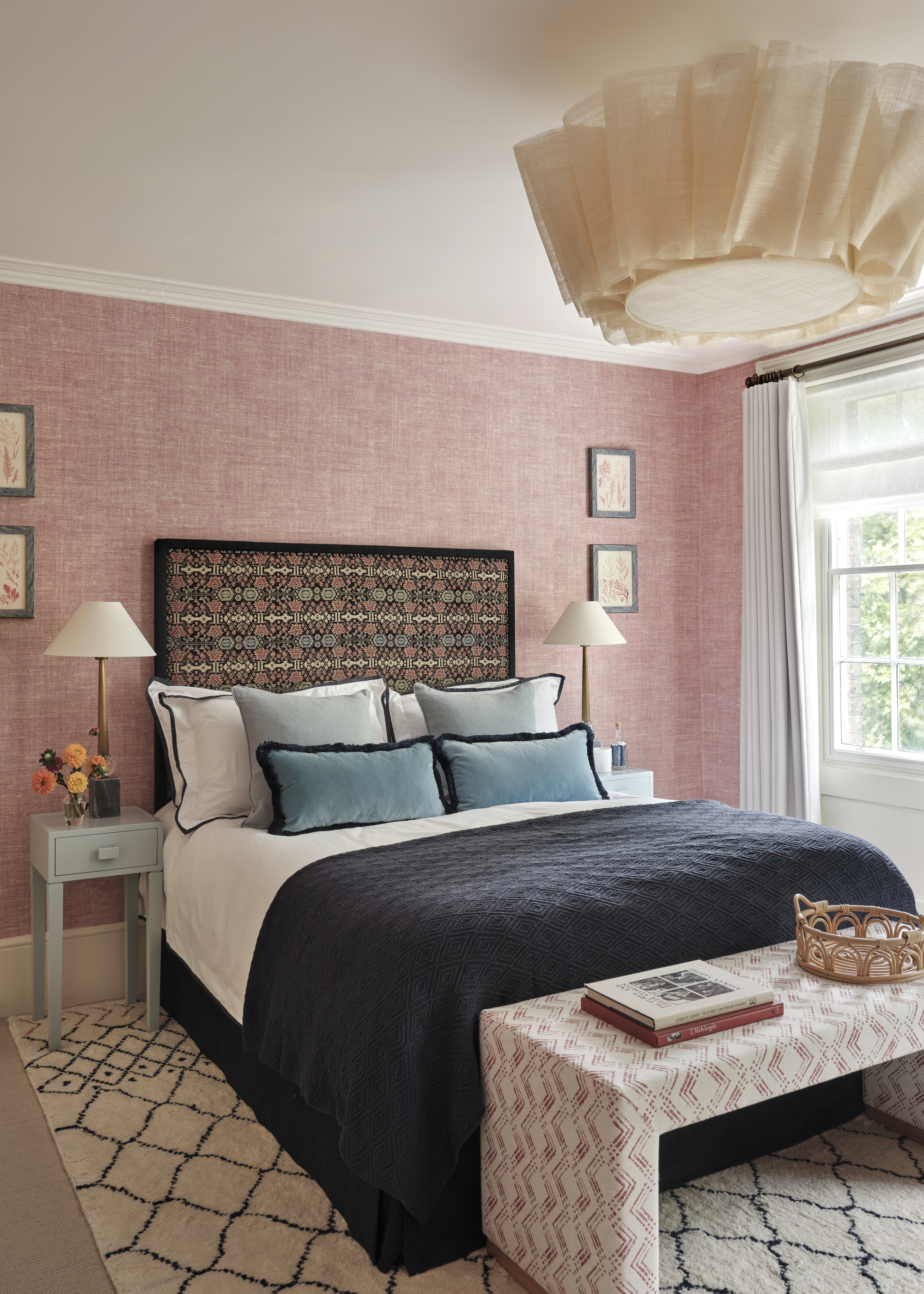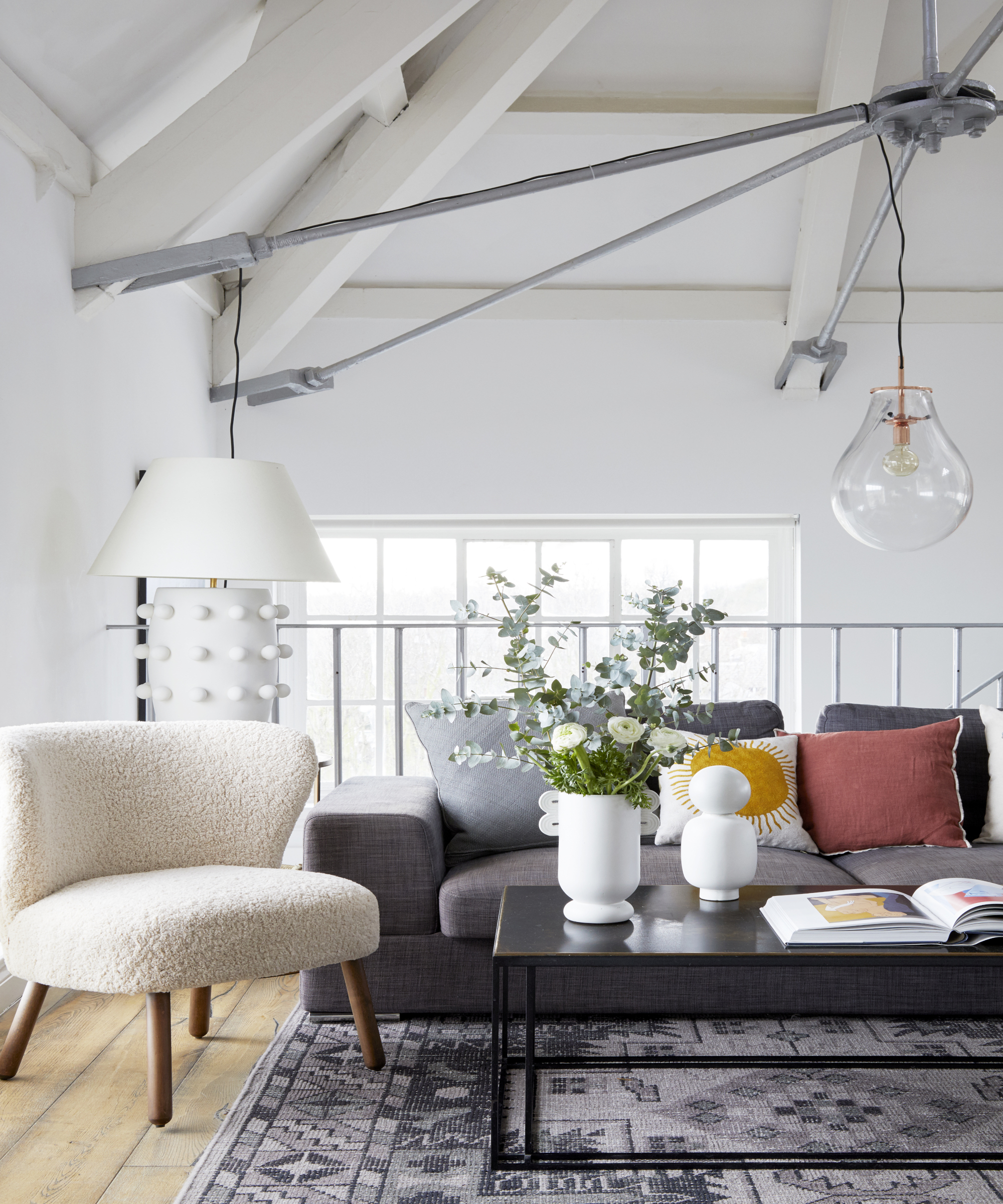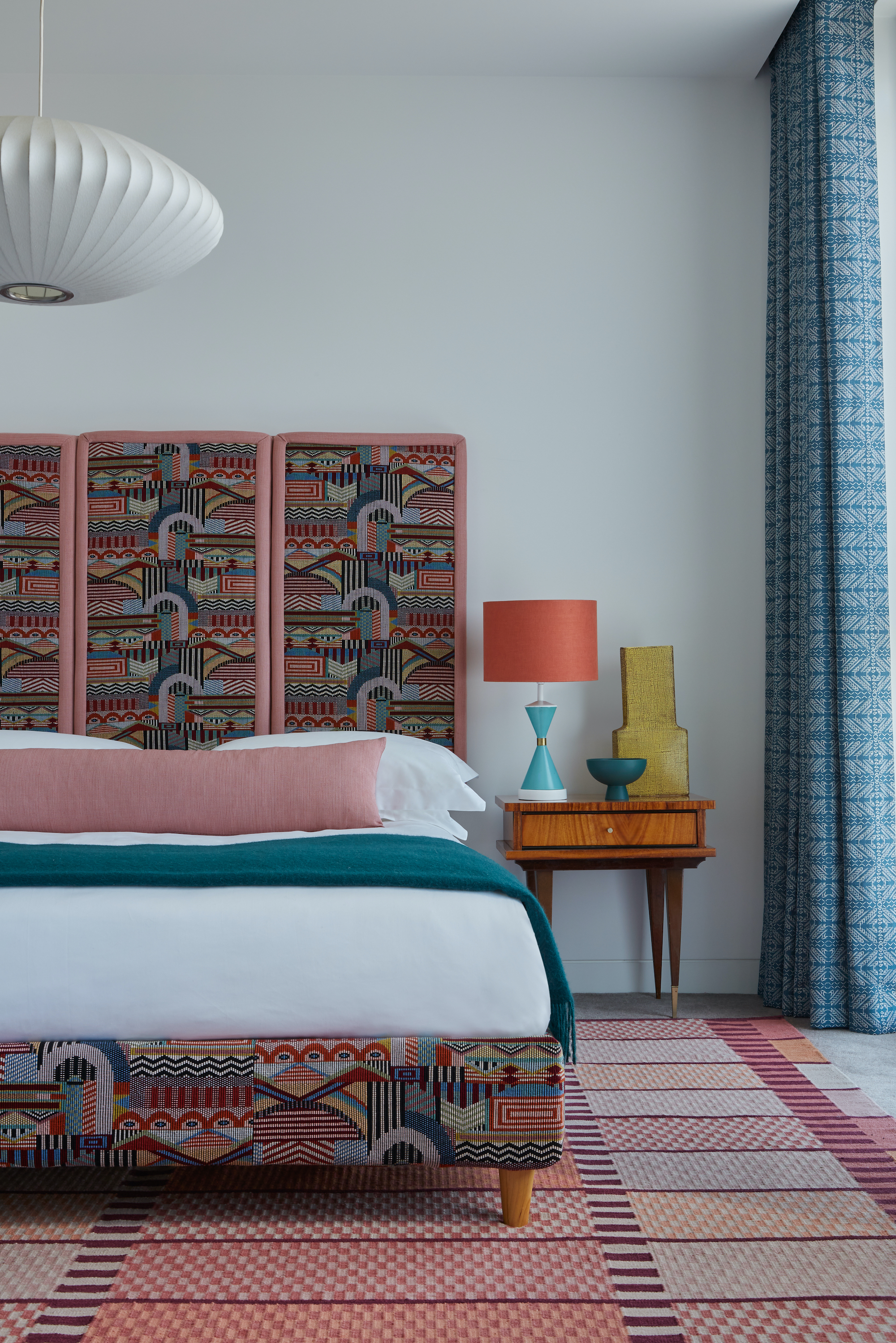
Few rugs have ever proven quite as popular as the Berber. Most commonly seen in black and white geometric patterns, the North African design was a much-loved member of most millennials' design inventory (alongside gray, rattan, and anything bouclé). But, even with no doubt that the style will one day be back, one has to ask: what has replaced the Berber rug in 2025?
Anyone with their ear to the ground on interior design — yes, pun intended — will have noticed a recent shift towards brighter, more patterned rugs. But it's the type of weave we're choosing that marks the biggest change. Rather than plush, high-pile, and tufted styles, rug trends in 2025 are leaning more towards flatwoven styles that are durable and easy to clean.
So, if you're in the market for a new living room rug or kitchen runner, leave the Berber at the back door. Flatwoven rugs are the new (read: old) style that designers are favoring instead. Here's why.

Before diving into what is replacing the Berber rug in 2025, a brief rundown on the iconic style is probably worthwhile (it will be back one day, after all). These traditional floor coverings hail from Morocco, where they are woven by 'Berber' women.
"They use continuous loops of yarn instead of cut tufts, creating a dense pebbled texture underfoot," explains Dallas-based interior designer Lauren Saab, founder of Saab Studios.
Berber rugs traditionally feature a flecked appearance, which gave birth to the more modern geometric iteration with black and white hatched lines or chevrons. "With their soft wool texture and frequently patterned designs, Berber rugs are often used to bring warmth to a space," adds interior designer Rebecca Hughes. "We specify them in informal family areas and ski properties where their heft and heritage feel appropriate."
But nowadays, Rebecca says, the "ubiquitous cream-and-black loop pile" is growing tired. It seems our approach to decorating with rugs has officially evolved.

So, what are we choosing instead? Flatwoven rugs are prevailing in 2025, with natural materials the go-to choice. "For 2025, we are prioritizing rugs crafted from natural materials, such as jute, organic wool, and cotton," says Rebecca. Organic textures that still offer warmth and comfort, but with added durability.
It all comes down to a preference toward flatwoven vs tufted rugs. "Designers are skipping the looped Berber runner and reaching for a tonal flat weave for crisp pattern without bulk, or a low-pile wool rug in a subtle stripe where softness speaks volumes," says Lauren.
One of the more discernible styles coming to the fore is the Kilim (or Kelim) rug. This flatwoven textile is known for its distinctive, bold, and often geometric patterns and vibrant colors. You can think of it as a more colorful Berber with cleaner lines, a flatter weave, and a more durable construction.
Dhurries are another similar rug style which, like the Kilim, aren't hand-knotted or tufted. Visually, it's very similar to a Kilim, the only difference being that it's typically associated with Indian craftsmanship, while Kilim rugs originate from Persia.

"Flatwoven wool rugs edge out Berber in spaces that need pattern without bulk," explains Lauren. "Kilims and Dhurries are woven flat so the surface stays smooth with zero pile, and their geometric motifs come straight from the warp and weft threads. Right now, sun-faded palettes of chalk, clay, and limestone feel earthy and curated."
If you're choosing a living room rug, Lauren suggests placing one beneath a sharp-lined coffee table or across polished concrete to soften hard materials without adding visual weight.
While the geometric patterns traditionally associated with Kilim or Dhurrie rugs bring a timeless look, checkered iterations have been particularly popular. These checks, or sometimes plaid-like formations, are interlaced into the rug to produce subtle changes in color and texture. Sometimes they also blend different materials like wool and jute, too.
Vibrant and colorful, these rugs anchor spaces. They're statement pieces that naturally act less like an afterthought. Instead, their placement becomes central to a room's design, inspiring complementary color palettes and tying pattern motifs together.
Inspired by Swedish folk traditions, this flat-woven rug is made of natural wool and boasts sleek geometric shapes. It feels warm, looks contemporary, and the smooth, durable surface means it's functional, too.
This traditional Kelim (or Kilim) rug is composed of a flat-woven wool mix, making it suitable for high-traffic areas. The slit-weave technique creates a flat, tapestry-like surface that showcases the geometric design.
LAYERED has collaborated with Scandinavian artist Evelina Kroon to produce this traditional rug. The design combines tufted squares with flat-woven checks for a contemporary three-dimensional effect.
FAQs
Are Berber Rugs Still in Style?

Berber rugs certainly still (and always will) have a place in our homes, but perhaps it's time to move on from the modern cream and black design.
But Berber rugs, with their dense loops made of wool, will always be a timeless and practical choice. "They still appear on stair treads and in wall-to-wall installs where durability wins, yet designers in 2025 favor flatter, softer weaves with a more elevated feel," says Lauren.
What Are the Negatives of a Berber Carpet?
One of the key reasons why Berber rugs are going out of style in 2025 comes down to practicalities. "While Berber rugs can bring a beautiful warmth to a space with their tactile wool texture, on a practical level, their materials make them relatively hard to clean," says Rebecca. "Due to the handwoven nature and the thick wool pile, they can also shed somewhat, and their thick pile can sometimes cause issues with door swing clearance."
Lauren also notes that in high-traffic zones, the texture of Berber rugs can flatten quickly. "What begins as durable often ends up looking worn and working against you," she says, adding that the tight loops aren't well suited for pet owners, either. "One pulled strand can spiral quickly."
If there's one interior design trend to confidently back in 2025, it's the move toward flatwoven rugs that feel lighter, brighter, and more practical. The best rugs won't only add warmth to a room and comfort underfoot, but they'll also visually anchor the entire space, something both Kilim and Dhurrie rugs do well.







